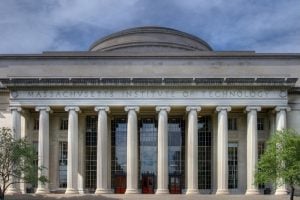
Soledad Villar, an assistant professor of applied mathematics and statistics at the Whiting School of Engineering, is among the leading contributors to a new community white paper that outlines how artificial intelligence (AI) is transforming the mathematical and physical sciences—and what can be done to harness its full potential.
The National Science Foundation-sponsored white paper, appearing on the preprint site arXiv, represents the collective voice of scientists working at the intersection of AI and disciplines such as astronomy, chemistry, materials science, and mathematics. The paper came out of the NSF Workshop on the Future of AI+MPS, held in late March at MIT.
“This initiative really brought together experts from a variety of fields to reflect on where AI is today and where it needs to go to be truly transformative in science,” said Villar, one of the workshop’s six co-organizers
According to Villar, the workshop and paper identified three core insights from the mathematical sciences: First, that AI is fundamentally built on mathematics; second, that mathematics is critical for improving, understanding, and ensuring the safety and efficiency of AI systems; and third, that AI itself can open new frontiers in mathematical research.
The white paper also examines structural needs—such as infrastructure, training, and education—that must be addressed to maximize the scientific utility of AI tools. Villar participated in both the math-focused and education-focused discussions. In the latter, she emphasized that AI is already reshaping how students learn and how instructors teach.
“Students and professionals are increasingly using AI tools, such as large language models (LLMs), across their work and studies. In mathematics, LLMs aggregate vast amounts of information, but are also prone to error. As educators, we need to rethink how we teach – helping students build critical thinking skills and learn to use these tools strategically and responsibly to reach their goals,” Villar said.
She said that while this paper is not the first NSF-sponsored effort of its kind, it stands out for its timely focus on AI’s disruptive impact on scientific research.
“With input from leaders across U.S. institutions, it offers a panoramic view of how AI is evolving within the sciences—and what the academic community must do next,” she said.
“This wasn’t about setting hard policy,” Villar said. “It was about surfacing the community’s voice, clarifying our collective needs, and identifying opportunities where AI can be not just a tool, but a partner in scientific discovery.”
Johns Hopkins collaborators on the white paper also included Yannis Kevrekidis, Bloomberg Distinguished Professor of applied mathematics and statistics, and Benjamin D. Wandelt, Research Professor of physics and astronomy and applied mathematics and statistics.